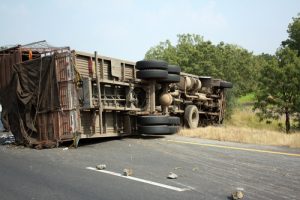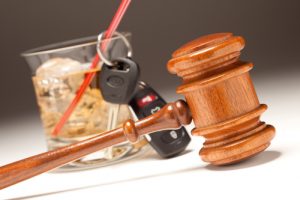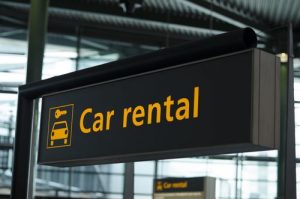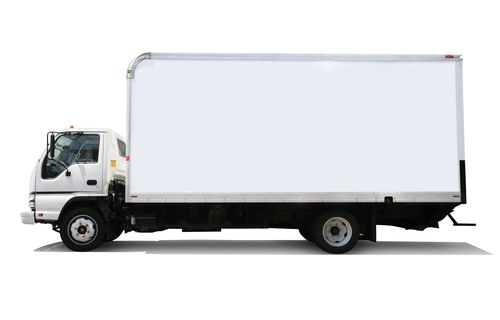 People who are injured in California accidents that are caused by the negligent actions of company drivers may be able to hold the employers vicariously liable to pay damages for the losses that they have suffered. However, employers are not liable under the coming and going rule for employees who are commuting to or from their jobs. If an exception applies, an employer may still be liable for the negligent actions of its employee while he or she is commuting to and from work. In Savaikie v. Kaiser Foundation Hospitals, Cal. Ct. App. Case No. B291120, the California Court of Appeals considered whether the required vehicle use exception to the coming and going rule applied.[1]
People who are injured in California accidents that are caused by the negligent actions of company drivers may be able to hold the employers vicariously liable to pay damages for the losses that they have suffered. However, employers are not liable under the coming and going rule for employees who are commuting to or from their jobs. If an exception applies, an employer may still be liable for the negligent actions of its employee while he or she is commuting to and from work. In Savaikie v. Kaiser Foundation Hospitals, Cal. Ct. App. Case No. B291120, the California Court of Appeals considered whether the required vehicle use exception to the coming and going rule applied.[1]
Factual and procedural background
Wyatt Savaikie was a 14-year-old boy who was crossing the street in a crosswalk in Santa Clarita, California on July 16, 2015, when he was struck and killed by Ralph Steger. Steger was a volunteer who provided pet therapy to patients at Kaiser Foundation Hospitals. He had just completed his volunteer shift and had stopped at his bank before he hit Savaikie with his vehicle. Savaikie’s parents filed a lawsuit against Steger, the City of Santa Clarita, Southern California Edison, and the County of Los Angeles. The state of California was dismissed as a defendant, and Kaiser Foundation Hospitals was added. They argued that Kaiser was vicariously liable for Steger’s actions as his employer. They settled with all defendants except Kaiser Foundation Hospitals. Savaikie’s brother, Michael, witnessed the crash and filed a claim of negligent infliction of emotional distress against the defendants.
 California Accident Attorneys Blog
California Accident Attorneys Blog


 A tragic case in San Bernardino County that involved a six-year-old girl who was struck by a car while crossing the street to catch her school bus demonstrates several things. Isabella Escamilla Sanchez, a minor, by and through her guardian ad litem, Carina Sanchez v. County of San Bernardino, a public entity; City of Highland, a public entity; et al., San Bernardino Superior Court, case no. 1309504, shows that accepted practices are not necessarily safe. The case also demonstrates how notice can affect the outcome of litigation and the vicarious liability that employers have when their employees’ negligence result in injuries to others.
A tragic case in San Bernardino County that involved a six-year-old girl who was struck by a car while crossing the street to catch her school bus demonstrates several things. Isabella Escamilla Sanchez, a minor, by and through her guardian ad litem, Carina Sanchez v. County of San Bernardino, a public entity; City of Highland, a public entity; et al., San Bernardino Superior Court, case no. 1309504, shows that accepted practices are not necessarily safe. The case also demonstrates how notice can affect the outcome of litigation and the vicarious liability that employers have when their employees’ negligence result in injuries to others. A provision that is included in pending legislation in the U.S. House of Representatives may result in fewer truck drivers in California taking needed rest breaks while they are working. The bill would apply to truck drivers who drive into California from other states while exempting them from California’s mandatory rest break requirements. If this bill passes, truck drivers may be more fatigued and cause more accidents in both California and in the rest of the U.S.
A provision that is included in pending legislation in the U.S. House of Representatives may result in fewer truck drivers in California taking needed rest breaks while they are working. The bill would apply to truck drivers who drive into California from other states while exempting them from California’s mandatory rest break requirements. If this bill passes, truck drivers may be more fatigued and cause more accidents in both California and in the rest of the U.S.
 In some cases, employers in California may be liable when their employees are intoxicated and cause accidents. Plaintiffs may be able to sue the employers under a legal doctrine called vicarious liability. Employers may also be liable if they negligently retain or hire an employee who then injures others while drinking and driving. In a recent case in Los Angeles, the principles of negligent retention and vicarious liability were demonstrated.
In some cases, employers in California may be liable when their employees are intoxicated and cause accidents. Plaintiffs may be able to sue the employers under a legal doctrine called vicarious liability. Employers may also be liable if they negligently retain or hire an employee who then injures others while drinking and driving. In a recent case in Los Angeles, the principles of negligent retention and vicarious liability were demonstrated.
 A long-term battle for justice for two 20-year-old women who lost their lives in a tragic accident has just ended in a huge way. Legislatures have just passed a law that governs how rental companies rent out their vehicles. The new law requires auto rental corporations to fix vehicles that are on their lots with recall orders on them. The legislation was passed because of the extremely catastrophic death of two sisters, Raechel and Jacqueline Houck. They lost their lives in 2004 in a crash that sent their mother on a mission to change laws.
A long-term battle for justice for two 20-year-old women who lost their lives in a tragic accident has just ended in a huge way. Legislatures have just passed a law that governs how rental companies rent out their vehicles. The new law requires auto rental corporations to fix vehicles that are on their lots with recall orders on them. The legislation was passed because of the extremely catastrophic death of two sisters, Raechel and Jacqueline Houck. They lost their lives in 2004 in a crash that sent their mother on a mission to change laws. The case of Kayleigh McCall v. Coast Line Distributing, Inc. and Paul Anthony Ceja in the San Luis Obispo Superior Court case no. 14CV0535 has taken the nation by storm. The original case was filed back on October 16, 2014 by 27 year-old Kayleigh McCall. Honorable Barry T. LaBarbera presided over the court proceedings in this auto v. auto accident. It wasn’t until March 10, 2016 that a jury verdict was actually reached in the case.
The case of Kayleigh McCall v. Coast Line Distributing, Inc. and Paul Anthony Ceja in the San Luis Obispo Superior Court case no. 14CV0535 has taken the nation by storm. The original case was filed back on October 16, 2014 by 27 year-old Kayleigh McCall. Honorable Barry T. LaBarbera presided over the court proceedings in this auto v. auto accident. It wasn’t until March 10, 2016 that a jury verdict was actually reached in the case.